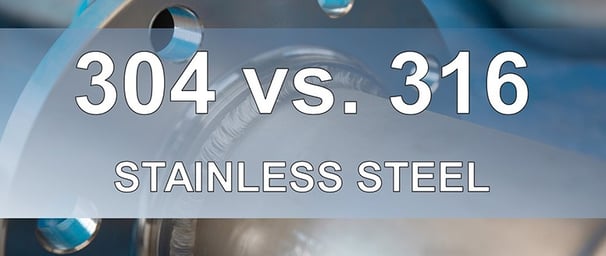304 vs 316 Stainless Steel: Key Differences Explained
Confused about choosing between 304 and 316 stainless steel? This comprehensive guide highlights their differences in durability, corrosion resistance, and ideal applications to help you make an informed decision for your specific needs.
Lin Davi
11/9/20244 min read


304 vs 316: Which Stainless Steel is Better for Your Needs?
Stainless steel is popular in everything from water bottles to kitchen appliances, and two of the most commonly used grades are 304 and 316. However, choosing between them can be confusing, as each offers unique benefits suited to different environments and uses. This article breaks down the differences between 304 and 316 stainless steel to help you make an informed decision based on your specific needs.
While both 304 and 316 stainless steels provide excellent durability and resistance to corrosion, they have key differences. Understanding these can save you time, money, and effort in selecting the right material for your application. Read on to discover how these materials compare and which might be better suited to your needs.
Choosing the right stainless steel grade is crucial depending on factors like exposure to moisture, salt, chemicals, and temperature. Let’s look at what makes 304 and 316 stainless steels unique and where they perform best.
316 stainless steel offers superior corrosion resistance, making it ideal for harsh environments, while 304 provides an affordable, versatile option for everyday applications.
Table of Contents
Which Stainless Steel is Better for Kitchen Use?
What Makes 304 Stainless Steel Unique?
304 stainless steel is one of the most widely used types of stainless steel for general applications. Its affordability and versatility make it popular across various industries, from household appliances to construction materials.
304 stainless steel is an affordable, durable material offering good corrosion resistance, making it suitable for most general applications. Here’s why it’s commonly used and when it’s the best choice.


304 stainless steel contains approximately 18% chromium and 8% nickel, which makes it resistant to corrosion from regular exposure to moisture. Its structure is highly durable, allowing it to resist rust and oxidation. 304 is known for its affordability and is commonly referred to as “food-grade stainless steel.” For this reason, it’s frequently used in products like cookware, food processing equipment, and water bottles.
304 is resistant to most typical corrosive environments and has excellent formability.
Often considered a versatile “general-use” stainless steel that fits a wide range of applications.
Typically more cost-effective than 316 stainless steel, making it a preferred choice for standard consumer products.
What Advantages Does 316 Stainless Steel Offer?
316 stainless steel is often chosen for its enhanced corrosion resistance, especially in environments where regular exposure to chemicals, salt, or other corrosive substances is a concern. Here’s how 316 stands apart from 304.
With higher nickel content and added molybdenum, 316 stainless steel provides better corrosion resistance, ideal for harsh environments. It’s often used in medical, marine, and outdoor applications.
The key difference between 316 and 304 stainless steel lies in the addition of 2% molybdenum in 316. This element significantly enhances corrosion resistance, especially against chlorides and saltwater exposure. 316 stainless steel is often used in medical equipment, marine environments, and high-exposure outdoor structures. Additionally, it has a slightly higher nickel content, making it less prone to oxidation and breakdown, even in more challenging conditions.


The inclusion of molybdenum improves resistance to pitting, making 316 ideal for marine applications.
Suitable for medical environments where sterilization is a constant requirement.
Higher nickel content also means enhanced performance in acidic or alkaline conditions.
Which Stainless Steel is Better for Kitchen Use?
Choosing between 304 and 316 stainless steel for kitchen applications depends on factors like exposure to acids, the frequency of cleaning, and the product’s intended durability.
304 stainless steel is often the best choice for kitchen use due to its durability and affordability, while 316 is ideal for highly acidic or demanding environments like commercial kitchens.
In home kitchens and standard cooking environments, 304 stainless steel provides excellent resistance to typical food acids and cleaning solutions. However, in commercial or high-usage kitchens, where there might be frequent exposure to strong acids or heavy cleaning protocols, 316’s added molybdenum offers an extra layer of protection, ensuring the equipment’s longevity. This is especially important in kitchens where the risk of rusting or pitting could compromise hygiene.


304 is well-suited for general kitchen use, offering ample durability and resistance to most acidic foods.
316 may be more practical in commercial kitchens or with high-frequency, industrial cleaning needs.
Which Option is Best for Outdoor or Marine Environments?
Outdoor and marine environments can be particularly tough on metals due to salt exposure, high humidity, and fluctuating temperatures. Here’s how 304 and 316 perform in such settings.
For outdoor and marine applications, 316 stainless steel’s enhanced corrosion resistance makes it the best choice. However, 304 may suffice in less demanding outdoor conditions.


In coastal or marine environments, 316 stainless steel is typically recommended due to its higher resistance to salt-induced corrosion. 304 stainless steel can still perform well outdoors but may require additional protective coatings to withstand prolonged exposure to humidity or salt. For structures like fences, boat fittings, or outdoor sculptures, 316 provides the robustness needed to endure these elements without rapid degradation.
316 is ideal for coastal or marine applications due to its resistance to salt-induced corrosion.
304 can be used outdoors but benefits from additional protection, like powder coatings, to enhance durability.
Conclusion
In summary, 304 and 316 stainless steels each bring their own strengths to the table. For general-purpose applications, 304 offers an affordable, durable option. However, if you need enhanced corrosion resistance in tough environments, 316 stainless steel is worth the investment. Choose based on the specific requirements of your project to ensure longevity and performance.
Quality
Professional manufacturer of insulated cups in China.
Innovation
Design
+86 18868467314
Copyright © 2012 - 2024, Chengruo Limited. All rights reserved.
